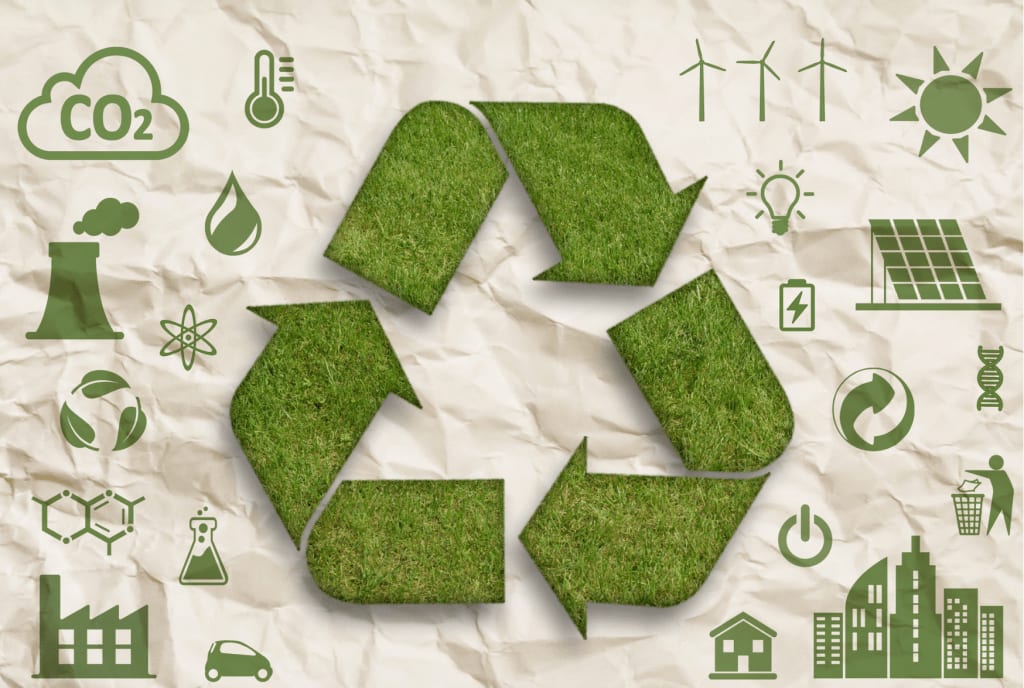The Role of Circular Economy in Achieving Sustainable Development Goals
The circular economy maximizes resource efficiency, reduces waste, fosters economic growth, and supports social equity. By embracing circularity, we can achieve sustainable development goals through collaboration and innovation.

In the face of pressing environmental challenges and the need for sustainable solutions, the concept of a circular economy has emerged as a transformative approach to achieving the United Nations' Sustainable Development Goals (SDGs). A circular economy aims to maximize the value and utility of resources while minimizing waste and environmental impact. By transitioning from the traditional linear "take-make-dispose" model to a circular system, we can address critical sustainability issues, promote responsible consumption and production, and create a more resilient and equitable future. This article explores the key benefits and strategies of a circular economy and its crucial role in advancing sustainable development.
Resource Conservation and Efficiency:
At the heart of a circular economy lies the goal of resource conservation and efficiency. By adopting strategies such as recycling, reuse, and remanufacturing, the circular economy minimizes the extraction of virgin resources and extends the lifespan of products. Materials are kept in use for as long as possible, reducing the demand for new resources and the associated environmental impacts. This approach not only conserves natural resources but also reduces energy consumption and greenhouse gas emissions. By maximizing the value derived from resources, a circular economy contributes to sustainable production and consumption patterns, addressing SDG 12 (Responsible Consumption and Production).
Waste Reduction and Management:
Transitioning to a circular economy necessitates a shift from a linear waste management system to one that prioritizes waste prevention and reduction. Through strategies like waste separation, composting, and advanced recycling technologies, valuable materials can be diverted from landfills and reintegrated into the production cycle. This approach minimizes waste generation, conserves landfill space, and reduces pollution. By promoting proper waste management practices and investing in innovative recycling infrastructure, a circular economy supports SDG 11 (Sustainable Cities and Communities) and SDG 13 (Climate Action).
Economic Growth and Job Creation:
Embracing a circular economy not only supports environmental sustainability but also generates economic benefits. By reimagining business models, companies can find new revenue streams in product refurbishment, remanufacturing, and recycling. This shift fosters innovation, stimulates job creation, and enhances competitiveness. In a circular economy, local and regional economies thrive through the development of recycling infrastructure, repair services, and secondary material markets. By embracing circularity, businesses contribute to SDG 8 (Decent Work and Economic Growth) and SDG 9 (Industry, Innovation, and Infrastructure).
Sustainable Supply Chains:
Circular economy principles extend beyond individual products and encompass entire supply chains. Collaboration and cooperation among stakeholders are essential to create closed-loop systems that minimize waste and optimize resource utilization. Companies can adopt sustainable sourcing practices, design products for durability and recyclability, and explore innovative logistics and reverse logistics models. By integrating circularity into supply chains, businesses contribute to SDG 12 (Responsible Consumption and Production) and SDG 17 (Partnerships for the Goals).
Social and Environmental Benefits:
The implementation of a circular economy yields numerous social and environmental benefits. By reducing pollution, conserving resources, and promoting sustainable practices, it improves air and water quality, protects ecosystems, and mitigates climate change. The preservation of natural resources and ecosystems contributes to SDG 14 (Life Below Water) and SDG 15 (Life on Land). Additionally, a circular economy enhances social equity by creating job opportunities, supporting local communities, and promoting inclusive and sustainable growth, aligning with SDG 1 (No Poverty) and SDG 10 (Reduced Inequalities).
The transition to a circular economy is vital for achieving sustainable development. By adopting circular economy principles, we can conserve resources, reduce waste, stimulate economic growth, and promote social and environmental well-being. Governments, businesses, and individuals must work together to implement innovative policies, invest in research and development, and foster collaboration across sectors. Through the adoption of a circular economy, we can pave the way towards a sustainable and prosperous future, in alignment with the United Nations' Sustainable Development Goals.
About the Creator
Shafiq Sahfudin
Sustainability fights climate change. By embracing renewable energy and minimizing harm, we secure a better future.






Comments
There are no comments for this story
Be the first to respond and start the conversation.